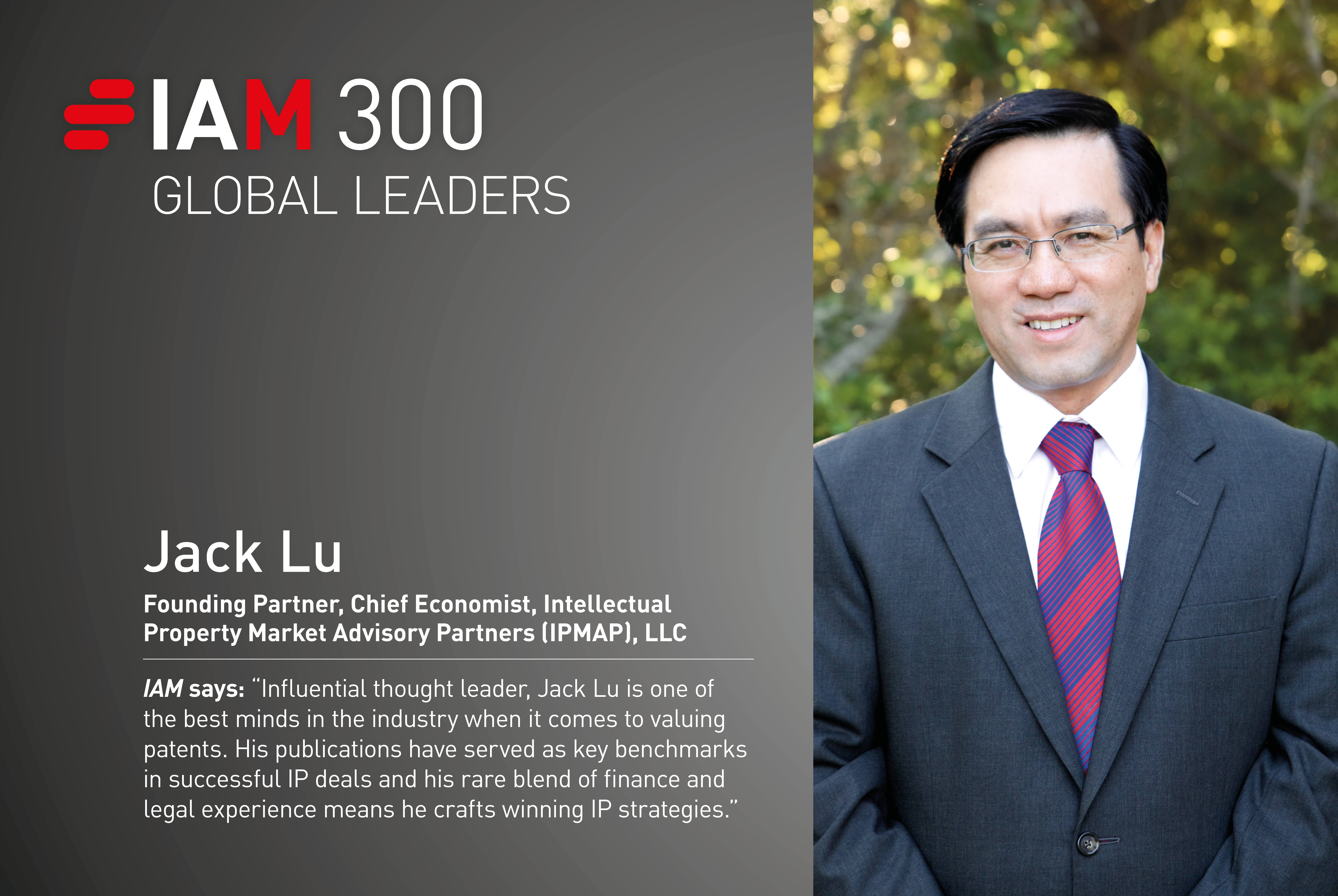Jack Lu
You recently received the 2023 President’s Award of Licensing Executives Society USA and Canada (LES), which is the highest honour that LES can give to its members. Can you tell us more about this award?
I am truly honoured to receive this award from LES. There are so many of my colleagues who go above and beyond to serve the organisation, including my dear friend and long-time business partner Bob Held. I wish I could have shared this with him.
You have attracted attention for writing about the LES build-up method for royalty rate determination. Can you tell us more about this method?
In addition to providing market updates and benchmark royalty data, LES’s High Tech Royalty Survey team does econometric analyses on the collected data to reveal market insights that are not directly shown by descriptive statistics. I first presented the idea of using the royalty rate premiums or discounts from the analysis to create a build-up method for royalty rate determination during the LES 2018 Annual Meeting. When we were drafting the 2021 High Tech Royalty Survey report, I thought that it was the right time to put together an article introducing the method. However, all sorts of issues needed to be appropriately addressed before I could write one.
After the report was released and before I finally sat down to draft the article, I did five presentations – in the United States, Canada and Europe – to share the survey results and method with colleagues in the IP industry, which all were well received and became the foundation of the article.
Our team is glad that we are able to provide a practical tool for IP professionals to solve real-world problems in IP-related business decisions.
Research like this takes substantial amount of time. How does this impact your current business?
While the work that I do for LES is purely on a volunteer basis, research is one of our firm’s three core services. IPMAP offers economic and financial analysis, customised research and commissioned study to address specific topics and issues that are of client interest. Our team consists of business veterans and academic scholars.
The firm’s litigation economics consulting business is thriving too. Our damage experts, Professor Yaroslav Rosokha of Purdue University, Keiko Hikino and myself, and consulting expert Bob Held are long-time industry experts and renowned economists. These combined experiences and expertise allow us to offer highly competitive damages expert reports and testimonies.
Finally, our IP transaction and monetisation business has gained the momentum much more quickly than we anticipated. Before covid-19, Bob Held and I started to expand the IP transaction and monetisation management business, and we together have closed more than a dozen deals in patent brokerages and monetisation management since early 2022. Our monetisation management service connects patent owners with funders by preparing technical/infringement analysis and damage estimates, and after a case is funded, we manage the monetisation process by negotiating licences and working with legal teams for litigation management.
IP business dynamics continue to configure and reconfigure the IP landscape. What is the most critical emerging issue worth watching out for?
One interesting industry development is the emergence of a secondary market for patent litigation financing. While secondary markets for other segments of litigation have existed for a while because claims are assets and transferable, a secondary market for patent litigation financing is still at a nascent stage. Our team has witnessed the challenges encountered. As an economist and financial analyst, I truly believe that a secondary market facilitates labour division and specialisation in IP litigation business, which, in turn, will enhance market efficiency and increase investment return. However, certain issues, especially those concerning the discoverability of litigation financing and refinancing agreements, would have to be fully addressed before the expansion of secondary markets for patent litigation financing can take off.
A few big trade secret cases are making headlines around the world. In your opinion as an IP economist, what considerations should companies contemplating trade secret litigation bear in mind?
Two of the key issues in trade secret litigation are defining the trade secret and establishing the causality between it and the damages claimed. Parties must rely on case-specific facts to support or rebut their arguments about the definition and causality. For example, if a plaintiff decides to pursue damages in reasonable royalties, its damage claims would be much stronger if it has previously received royalty payments from third-party licensees.
Jack Lu
Founding Partner, Chief Economist
[email protected]
Jack Lu specialises in economic study and financial analysis for IP valuations, damage estimates and royalty rate determinations. He is an active player in the patent market, and offers services in licence negotiation, brokerage and monetisation management. With 30 publications, Mr Lu has served as senior vice president for economic analysis and survey for the Licensing Executives Society United States and Canada since 2018 and was awarded the President’s Award in 2023.
